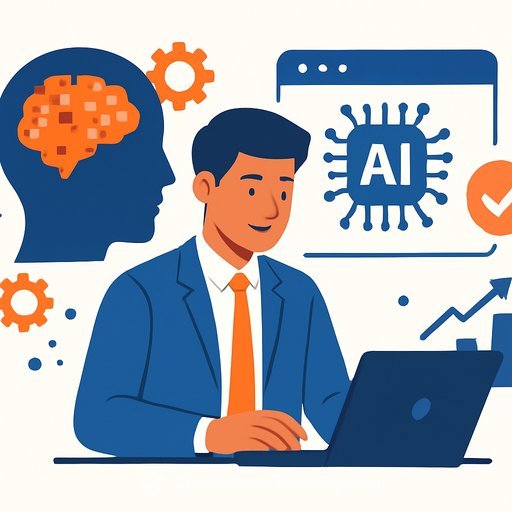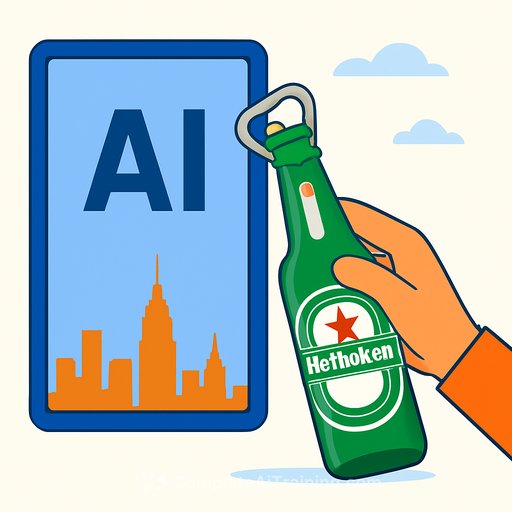AI intent is high. Confidence isn't. Here's how marketers close the 27-point gap
MiQ's new global survey of 3,169 marketers shows a clear split. 72% plan to use AI more in the next 12 months, but only 45% feel ready to apply it well. That gap isn't a tech problem. It's a skills, data, and measurement problem.
The first edition of The AI Confidence Curve (September-November 2025) maps where teams feel stuck and what's working. The message is simple: adoption is happening, but maturity lags. Fix the fundamentals and confidence follows.
Where AI is delivering now
AI is most common in social media management (40%), marketing automation (39%), and customer engagement (38%). 66% say they use AI on most or all projects. Visual design sits at 37%; SEO and content optimization at 33%.
Ad campaign management reached 35%, with content creation and ad creative design/optimization at 32%. Translation: AI is in the workflow, especially where generative tools fit easily.
Confidence varies by market. Canada, Australia, and Japan lead in positive sentiment. China, Mexico, and Thailand lag, tied to tool access and cultural adoption patterns.
Why confidence lags
The top blockers are predictable and fixable. 40% say their organization doesn't understand AI or LLMs well enough. 38% lack training. 42% face data-sharing limits with tools. 44% can't track results against the right goals, so teams default to proxies like clicks and raw traffic.
Both junior and senior teams report weak training on tools they already have. Many are still building the education, measurement, and workflow systems to use AI consistently.
Measurement: knowledge ≠ outcomes
49% feel confident in their knowledge of AI tech, yet only 45% feel confident using it to drive operational efficiencies. For specific tasks: 49% feel good about insights and intelligence, 43% about channel selection, and 40% about optimizing against KPIs. 40% trust their internal AI solutions.
Nearly half say AI makes measuring cookieless environments manageable. 44% feel confident connecting targeting and creative to performance. 43% believe they have effective measurement across the full funnel. Senior leaders report higher confidence than juniors (47% vs. 36%).
Data access is the bottleneck
Over 40% can't share client or brand data with AI tools. That caps value. If AI can't see your first-party signals, you get generic recommendations and shallow optimization.
Among the 37% struggling to use AI for insights, data access restrictions rank as the top issue. Clean, governed data pipelines and privacy-safe integrations matter more than another shiny feature.
Vendors are moving fast with more accessible interfaces and agent features, but without data integration, they won't move the revenue needle.
Adoption outlook and what teams measure
Among marketers already confident in results, 75% plan to increase AI use next year. Half say they have the right goals in place. For the 41% confident in team optimization, data sharing is the biggest concern, followed by training.
What gets measured: engagement metrics (49%), web traffic (46%), financial metrics like ROI/ROAS/CPA (44%), customer retention (36%), brand sentiment (34%), and conversions (30%). Teams focusing on different metrics report similar confidence levels, suggesting AI tools are making harder measures more workable.
73% plan around the end-to-end customer path instead of siloed channels. Better structure. Better insights.
Platform fragmentation is real
Generic tools are easy but shallow. Bespoke solutions are powerful but demand data integration and new workflows. If a solution can't plug into your stack, match your process, and use your data, it gets rejected by busy teams. That's the adoption filter.
The confidence stack: build it in 90 days
- Use cases and KPIs: List 5-7 AI use cases you already run (e.g., creative iterations, bid changes, budget pacing, audience building). Attach one primary KPI to each. Kill anything tied only to vanity metrics.
- Data plan: Map what first-party data each use case needs. Decide the access path (APIs, clean rooms, secure uploads). Enforce privacy and governance. Favor partner-agnostic solutions that merge platform data to reduce silos.
- Training sprint: Run role-based workshops for practitioners and managers. Standardize prompts, QA checklists, and failure modes. Add office hours. If you want a structured path for marketing teams, consider this certification program: AI Certification for Marketing Specialists.
- Measurement that matters: Tie AI outputs to business outcomes. Set clear tests for incrementality. Instrument creative and audience changes for attribution that works without cookies.
- Human-in-the-loop: Define who reviews what, before what, and how often. Add pre-flight and post-flight checks for model bias, brand safety, and spend efficiency.
- Vendor checklist: Integration speed, API coverage, data controls, model transparency, and auditability. If it can't show its work or connect to your data, it's a risk.
Industry implications
The 27-point gap will force choices: invest in training, pick tools that integrate, wire measurement to KPIs, and keep human judgment in the loop. Organizations that treat confidence as a capability will scale faster and waste less.
As McKinsey, Google, Amazon, and others push agent features and automation, the teams that win will be the ones who pair new interfaces with clean data and tight feedback loops-not the ones who add another tool without enablement.
Timeline
- September 2025: MiQ and Censuswide survey 3,169 marketers across 16 countries
- September 2025: IAB Europe reports 85% AI adoption in digital advertising; 60% provide AI education
- November 11, 2025: MiQ releases The AI Confidence Curve showing a 27-point gap between usage and readiness
- November 11, 2025: Amazon announces AI agent features for Marketing Cloud and DSP
- November 2025: Industry leaders highlight natural language interfaces for easier programmatic execution
Bottom line
AI capability isn't the limiter. Confidence is. Build it through education, data access, outcome-based measurement, and human oversight. As MiQ's CMO Jordan Bitterman put it, the gap is "pure opportunity." The teams that turn that into a system will take the lead next year.
Your membership also unlocks:






